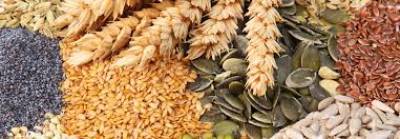NEW DELHI, 28 May 2025: India’s total trade for the financial year 2024–25 (FY25) surged to $1.73 trillion, with exports clocking $820.93 billion — a 6.5% year-on-year rise — and imports reaching $915.19 billion, up 6.85%. This widened the trade deficit to $94.26 billion, compared to $78.39 billion in FY24.
While services exports, powered by India’s IT, finance, and business process outsourcing sectors, remained a bright spot at $383.51 billion, the agricultural sector continued to lag behind, highlighting persistent structural issues and policy inconsistencies.
Services Shine, Merchandise Steady
Merchandise exports stood at $437.42 billion, accounting for 53% of total exports, while services made up the remaining 47%. On the import front, merchandise dominated at $720.24 billion (79%), with services imports at $194.95 billion (21%).
With the International Monetary Fund pegging India’s nominal GDP at $4.19 trillion in FY25, the trade-to-GDP ratio now stands at an impressive 41.4% — underscoring India’s deeper integration into the global economy.
Agriculture’s Tepid Growth Amid Historical Highs
Agricultural exports rose from $48.9 billion in FY24 to $52 billion in FY25 — a 6.3% increase. However, this modest rise falls short of the trajectory needed to meet the $100 billion export target by 2030. In contrast, between FY05 and FY14, agri-exports grew at an average annual rate of 20%. Over the last decade, this has slowed dramatically to 2.3% annually, shrinking the agri-trade surplus from $27.7 billion in FY14 to just $13.8 billion in FY25.
Analysts attribute this slowdown not just to global price fluctuations, but also to India’s inconsistent export policies. Frequent bans and curbs — often introduced to manage domestic inflation — have undercut agri-export momentum.
Rice: The Double-Edged Sword
Rice was India’s top agricultural export in FY25, with shipments of 20.2 million metric tonnes (MMT) worth $12.5 billion — nearly 25% of total agri-exports. However, export controls imposed in FY23 — including bans on broken rice, duties on parboiled rice, and a minimum export price for basmati — led to global price volatility. Although export volumes dipped sharply in FY24, the easing of restrictions in late 2024 saw rice exports rebound.
Given India’s dominance in the global rice trade — supplying nearly one-third of the world’s 61.4 MMT market — economists suggest levying a moderate 10–15% export duty to maintain marginal revenue and avoid global price suppression.
A deeper concern lies in the environmental cost. Producing 20.2 MMT of rice in India requires nearly 40 billion cubic metres of water — a drain on already scarce resources, exacerbated by heavy subsidies for water, electricity, and fertilisers.
Agricultural Imports Rise Sharply
India’s agri-imports jumped 16.5% to $38.2 billion in FY25, up from $32.8 billion the previous year. Edible oils accounted for 45.4% of this, with imports worth $17.3 billion for 16.4 MMT — a reliance deemed excessive and economically vulnerable.
To reduce import dependency, India is urged to expand domestic oil palm cultivation. With oil yields up to 4 tonnes per hectare — 10x that of mustard — oil palm presents a viable alternative. However, its long gestation period poses financial risks for smallholders. Government compensation during this window and a regulated corporate leasing model involving farmer-producer organisations could spur investment while protecting farmer interests.
Way Forward: Strategy, Stability and Sustainability
Experts argue that India’s agri-export strategy must pivot toward productivity enhancement — through increased R&D, advanced seed technology, precision farming, and efficient irrigation systems. These measures would lower per-unit costs, boost global competitiveness, and ensure environmentally sustainable growth.
As the India–UK Free Trade Agreement reaches closure and negotiations continue with the US on a bilateral trade deal, India’s position in global trade is increasingly prominent. However, the agriculture sector demands focused reforms to realize its full export potential and ensure long-term rural prosperity.
Image credit: chinimandi.com




















